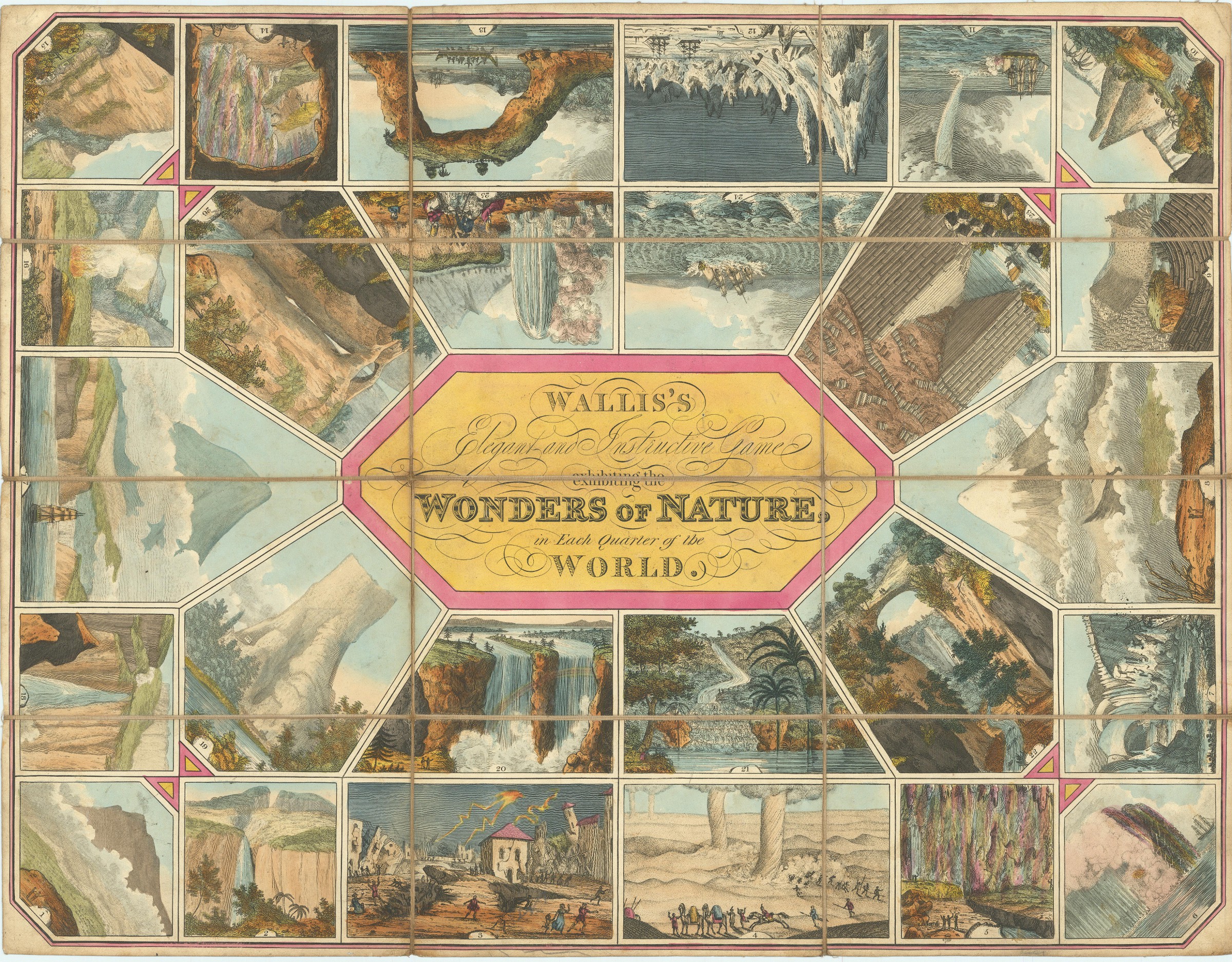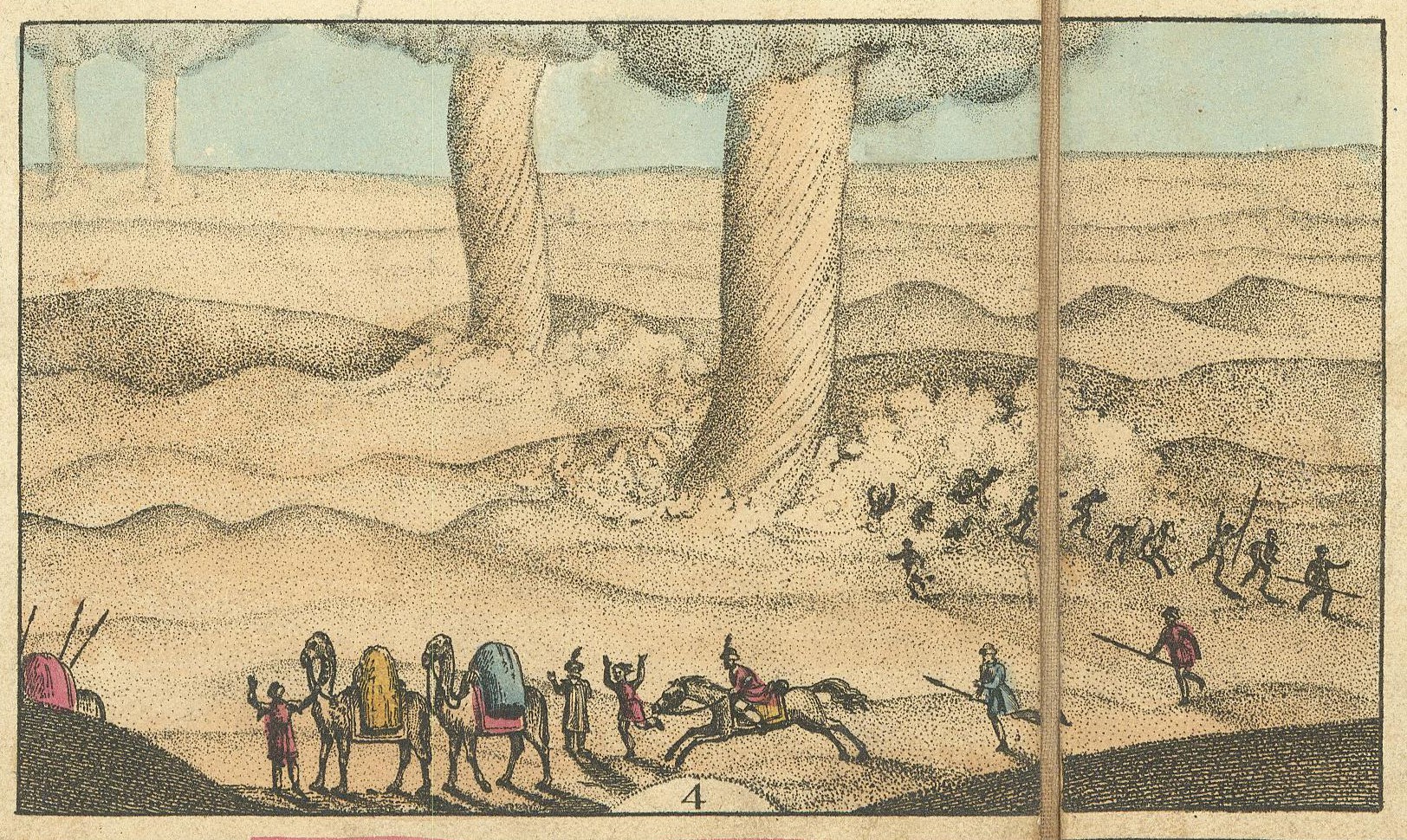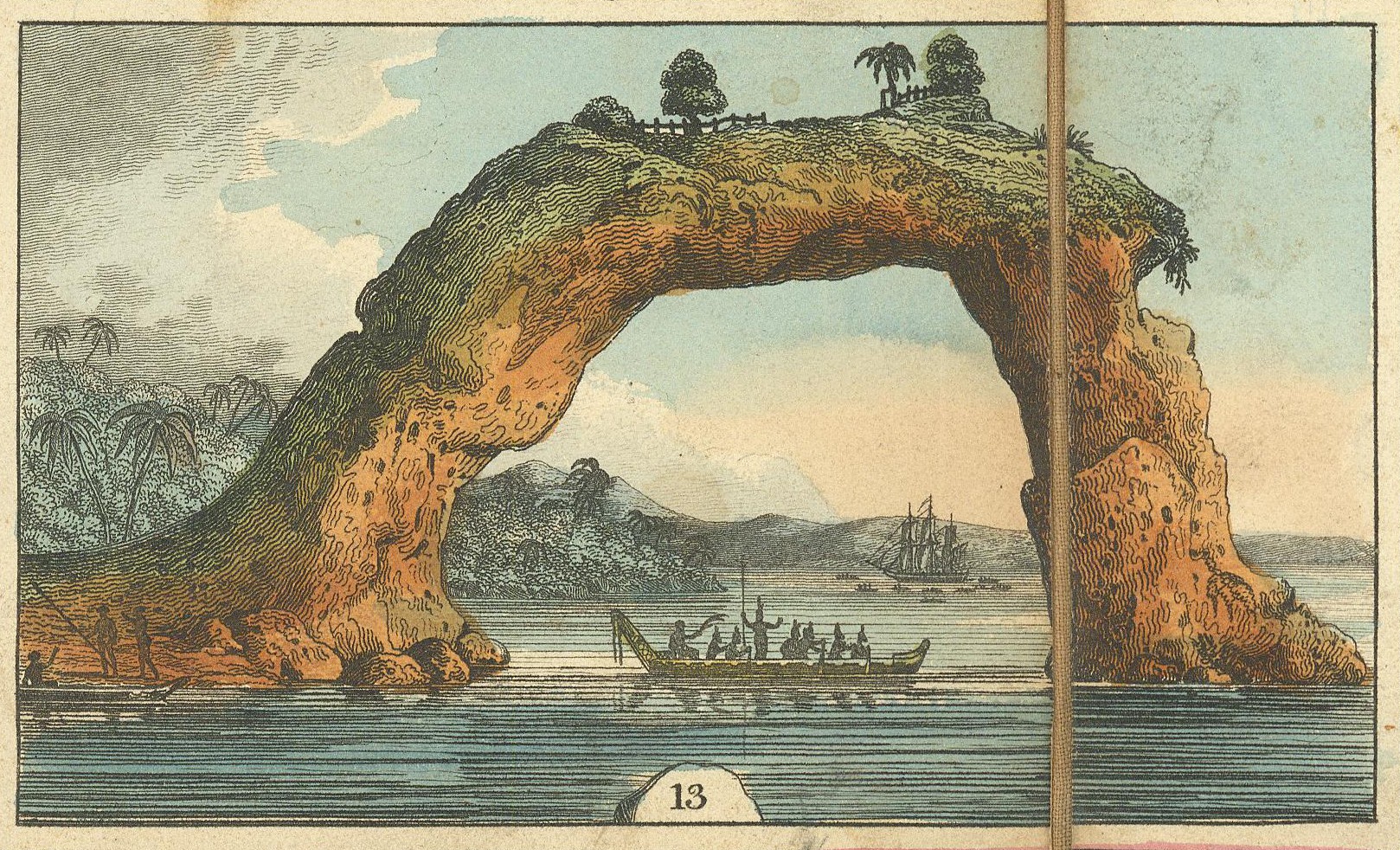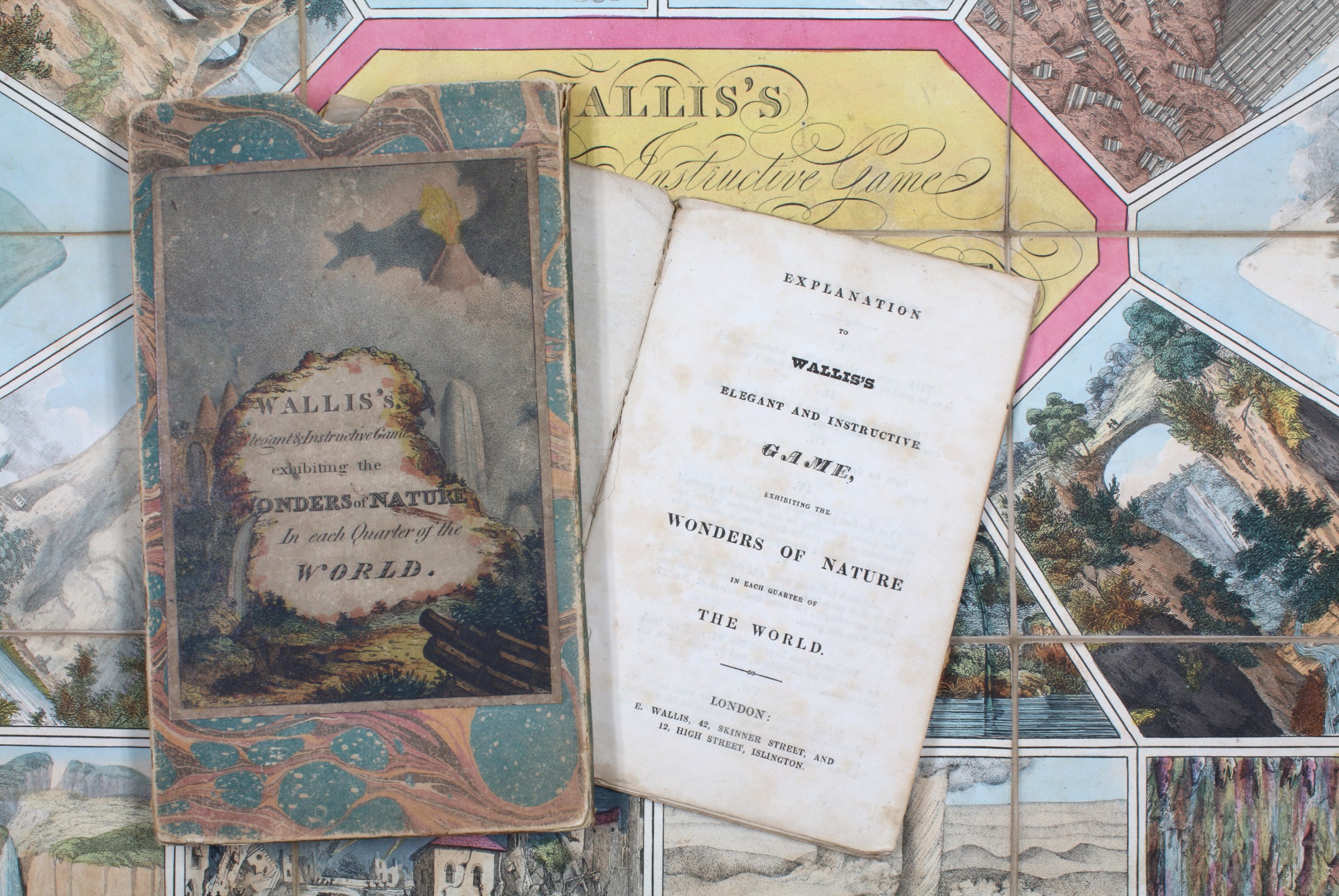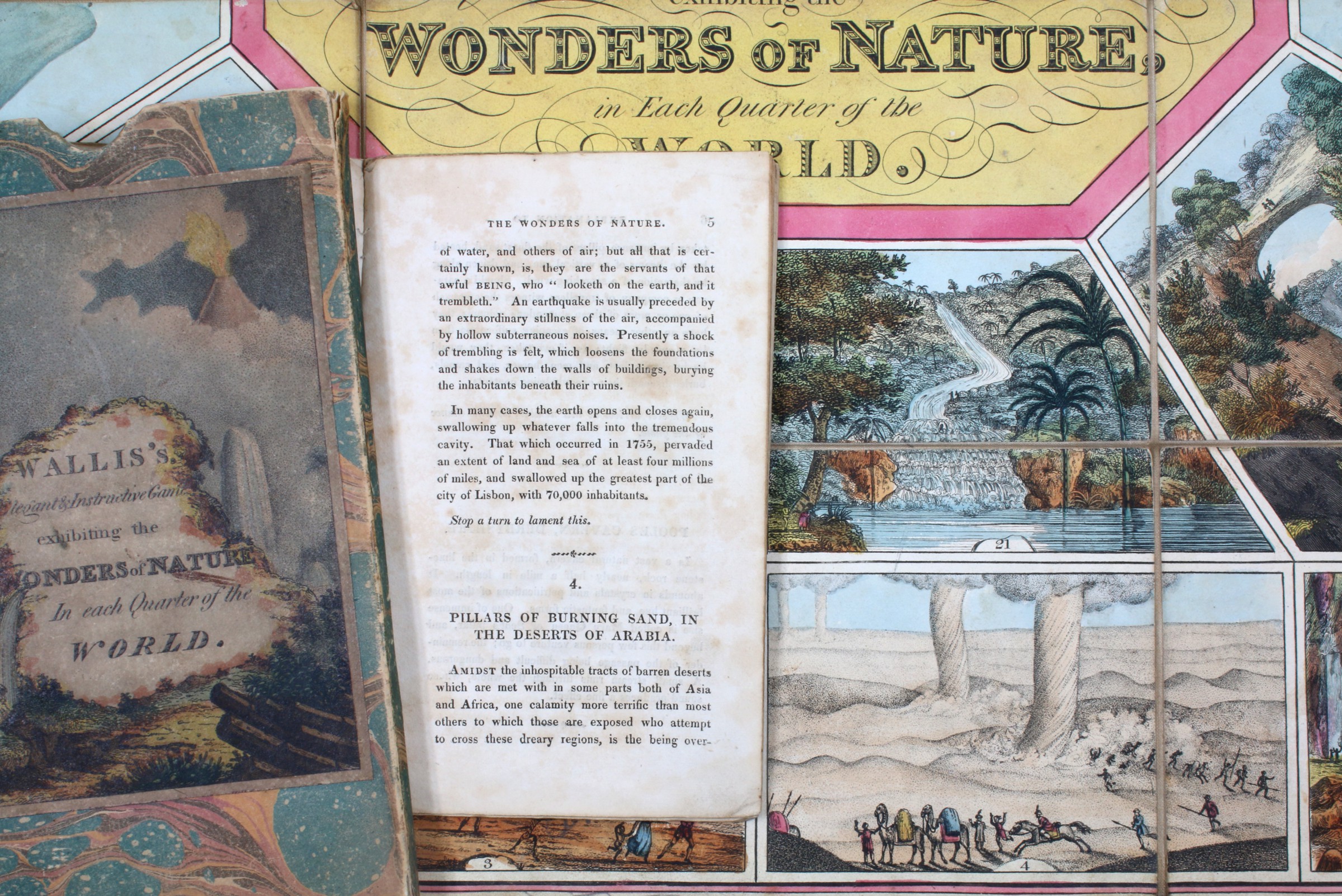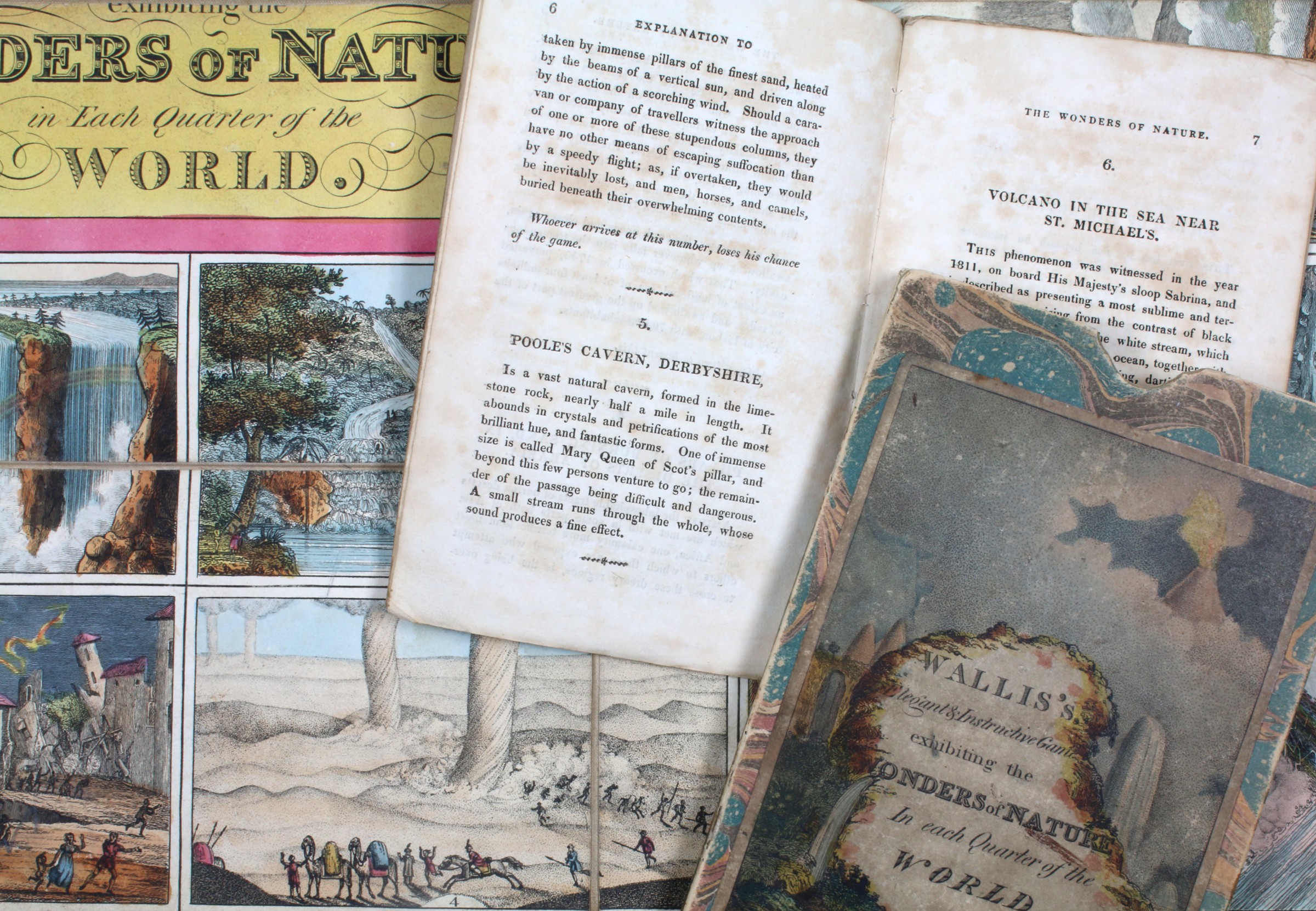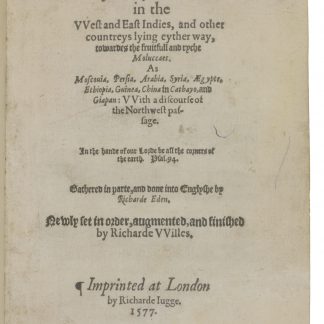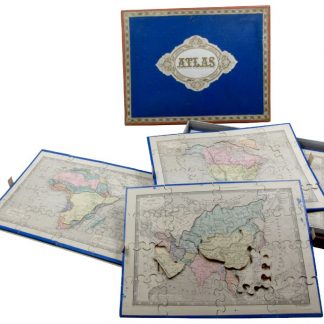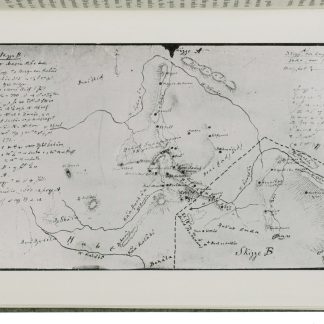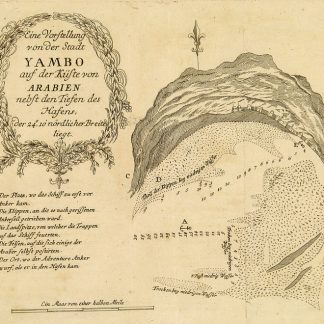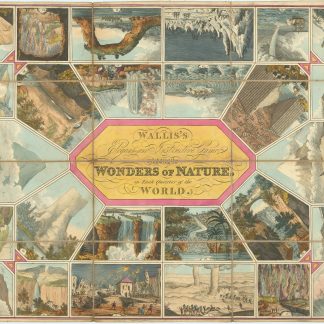Regency tabletop game for the armchair adventurer
Wallis's Elegant and Instructive Game Exhibiting the Wonders of Nature, in Each Quarter of the World.
Hand-coloured copper engraving mounted on canvas in 12 segments (620 x 470 mm). With accompanying pamphlet: 8vo. 20 pp. Contemporary plain brown wrappers. All housed in original marbled box with coloured and mounted illustration on the front.
€ 4,800.00
A fascinating Regency-era tabletop game featuring hand-coloured copper engravings of famous (and dangerous) landmarks to stir the imaginations of British armchair adventurers. The gameboard consists of twenty-six sections depicting various natural wonders, through which a player must move, facing hazards along the way. The accompanying booklet contains not only the game instructions, but also an educational description of each such danger: if one lands on the "earthquake" section, one must "Stop a turn to lament this", whereas landing on the "pillars of burning sand, in the deserts of Arabia" ends one's game entirely. These so-called sand pillars are in fact enormous dust devils, and in Arab countries they are attributed to the djinn, the spirit race that lives alongside humans but are rarely seen. Although the first stories about them are older than Islam, djinn are mentioned in the Qur'an, which states that they are created from smokeless fire, and like mankind can be both good and evil (in Egypt they are known as "fasset el 'afreet", or ghost winds).
The various wonders depicted include Mount Etna in Sicily, Poole Cave in Derbyshire, the emergence of a volcano in the Atlantic Ocean near the island of São Miguel in the Azores, ice mountains at the North Pole, the basalt columns on the island of Staffa in the Hebrides archipelago, the Antiparos Cave in Greece, the Pico del Teide on the island of Tenerife, the Devil's Bridge in Switzerland, Niagara Falls, a waterfall on the White River in Jamaica, the Maelstrom on the Lofoten Islands in Norway and bubbling springs in the town of Geysir in Iceland. In its section on Mt. Etna, the booklet states that an eruption of 1669 wiped out 5,000 houses and formed a huge mountain two miles in circumference. In the section on earthquakes, the author describes the infamous and deadly Lisbon Earthquake of 1755 that flattened most of the city, at the time a thriving metropolis of 70,000 inhabitants.
Edward Wallis was the son of John Wallis (d. 1818), the most prolific publisher of board games in the late 18th and early 19th centuries; both of his sons continued his work.
Booklet a little browned due to paper stock, with a short tear to the wrappers. Board somewhat browned in the margins; overall well preserved, especially the colours, which remain bright.

